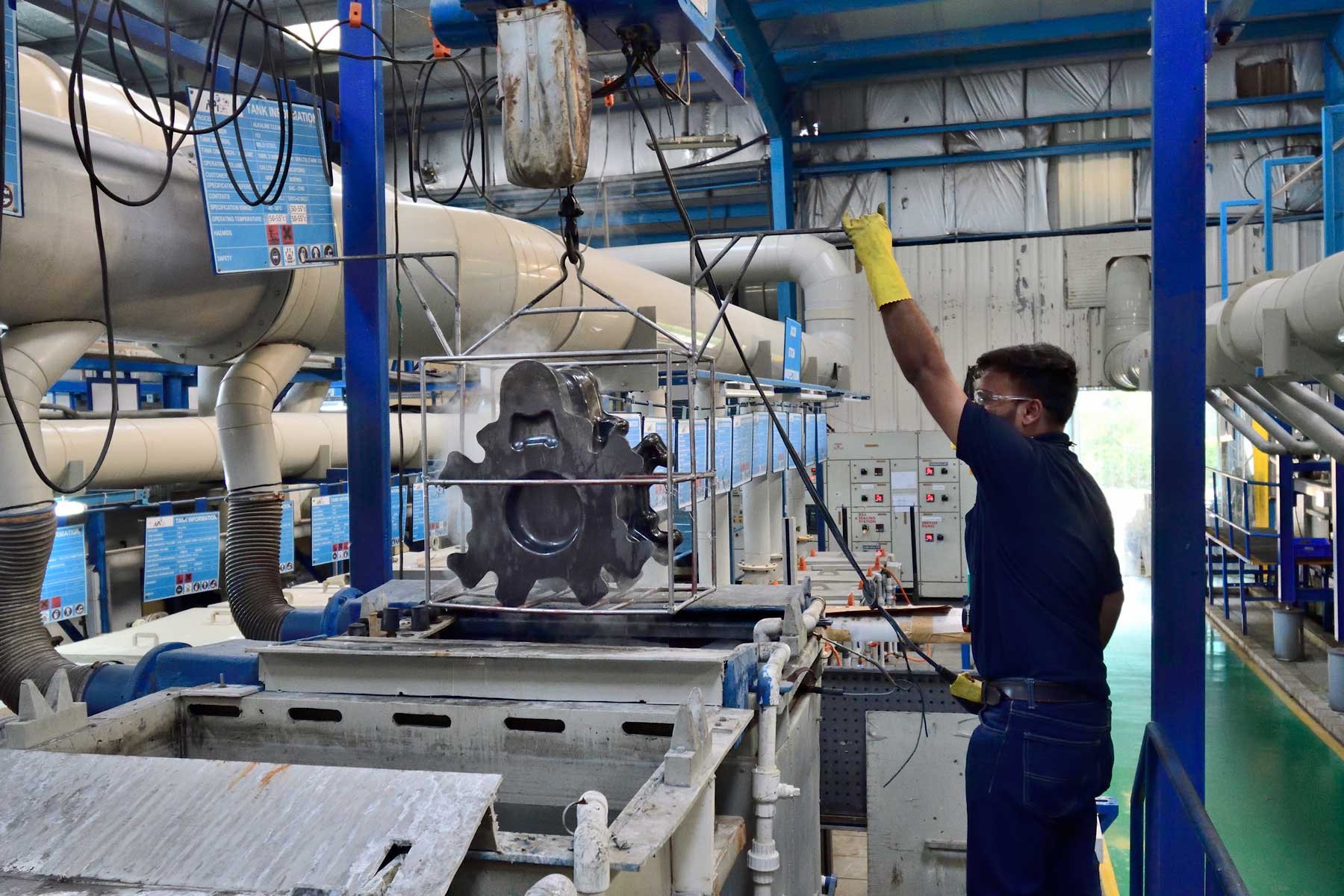
The surface treatment process is one of the critical step to ensure quality, safety, and precision of products for the aerospace industry. This process provides a physical shield to protect parts against corrosion and moisture.
API is a joint venture which we entered into with Magellan Aerospace Limited, Canada in 2007 to provide innovative surface treatment solutions that are not readily available in India. API has NADCAP accreditation for chemical processing, surface enhancement and non-destructive testing, all of which are critical capabilities across the aerospace industry. The unit is AS9100 Rev D and ISO 14001-2004 & BS OHSAS 18001:2007 certified.
India’s First 3rd Party Facility, approved by Airbus & Boeing
NDT is the process of inspecting, testing, or evaluating materials, components or assemblies for discontinuities or differences in characteristics without destroying the serviceability of the part or system. It can be used to locate discrepancies in size, surface, and subsurface flaws. These non-destructive tests are often used to determine the physical properties of materials such as impact resistance, ductility, yield and ultimate tensile strength, fracture toughness and fatigue strength. NDT more effectively finds discontinuities and differences in material characteristics.
BSA is an anodizing that results in a thin oxide layer with optimal adhesion properties and good corrosion resistance. The same is applied if strict requirements are imposed on corrosion resistance, and sulphuric anodizing is not an option due to the negative effects on fatigue strength. The BSA process is mainly applied to aerospace components. Primarily, BSA is used as a pre-treatment before paint application.
Etching is carried out on parts/products to improve traceability, make the metal active and bring the grains on the surface. Marking is done through either chemical or non-chemical means like electrochemical etch marking, inkjet marking, marking with pens, and tagging onto Steel. Aluminum and aluminum alloy products and precise etching is done from mixed acids on titanium parts.
Anodizing is an electrolytic process through which a layer of oxide is produced to improve corrosion resistance, adhesion properties of bonding and wear and tear resistance. Anodizing can be done on highly corrosive metals, and based on the characteristic of the metal, different types of aqueous solutions are used.
To improve corrosion resistant property and aesthetic, moly coat and painting are done either using solvent-based paint or water-based paint. Application of paint can be made using a conventional spray or electrostatic or electrophoretic processes. Once the painting of the part/product is carried out, it is marked with a batch number for traceability.
Passivation and salt spray are standardized, and popular corrosion test methods used to check corrosion resistance of materials and surface coatings. Once the passivation is done using a light coat of protective material, it must undergo a corrosive attack then to evaluate the suitability of the coating for use as a protective finish. A salt spray test does this corrosive attack, and the appearance of corrosion products (rust) is evaluated after a pre-determined period.
NADCAP accredited Cadmium Plating is a robust and versatile metal coating process widely accepted in the Aerospace industry. Plating’s primary functions are: Decorate objects, corrosion inhibition, improve solderability, harden & improve wearability, reduce friction, improve paint adhesion, alter conductivity, improve IR reflectivity, and radiation shielding.
Imparting residual compressive stresses in the surface layers of metallic components is one of the ways to improve their fatigue strength characteristics. Shot peening is employed for imparting residual stresses using cold work by shooting tiny steel balls on the surface from a certain height with pressure to enhance the compressive strength of the material. In this process, compressive stress is induced to considerably reduce fatigue cracks during this operation.